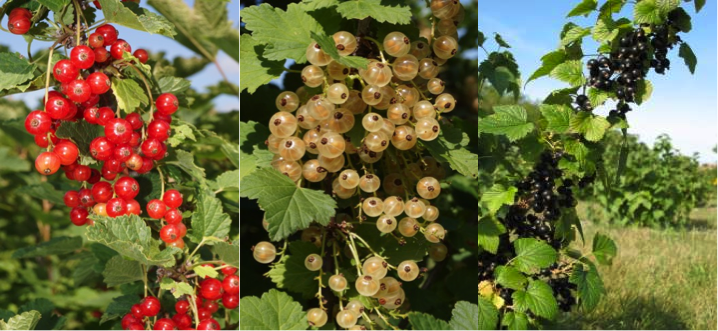Celebrating the Red, White and Black! And Pink…
Red, white, black and pink. These are all the colors of currant fruit! Are currants an all-American fruit? Yes and no.

American currants (Ribes americanum), and other currant species, grow wild across much of eastern and central North America but are also found in the west. They are more subtle in their flavor and generally come in one color - black. They tend to ripen over an extended period. We grew the USDA-Plant Materials Center’s Riverview germplasm American currant at the CREC for about 5 years but we removed them due to old fruit being a place where pests can reproduce. The fruit was bland and we did not harvest it while more valuable fruit was being cared for.
Most currants used for culinary purposes today are European currants. They have a long history here in the US, having been brought here in the 1600s. By 1899, there were over 12,000 acres of currants grown in the US. In the early 1900s, white pine seedlings were imported from German nurseries to replenish the clear-cut pine forests of the East. These seedlings carried white pine blister rust; it doesn’t bother the currants too bad but it is deadly for young white pines. Because white pine was so important for the economy at the time, federal rules were enacted to ban currants and fund the eradication of all known plants in the genus. During the Depression and beyond, Civilian Conservation Corps members were employed by the eradication program.
Today the Federal ban is gone but due to their long absence, most Americans don’t know anything about the virtues of currants. They are really healthful for you! They are high in vitamin C, antioxidants and many minerals. They grow well here in North Dakota. The CREC’s shrubs were planted in 2007 and in eight seasons, they only failed to produce a crop once (May 2015 freeze).
Red, white and pink currants are all very similar to each other. They are a bit tart but are loved across the world for snacks and jam. Black currants, though, are where it’s at: tasty, flavorful and slightly funky. Black currant plants have oil glands on the leaves and stems and release their “heady, herbaceous aroma” when brushed. The fruit is a bit “piney” when raw (we call that ‘resinous’) but cooks up into a wonderful, bold, fruity flavor. In Europe, you can find black currants in tea, wine, jelly, syrup, ice cream, liqueur, juices and more.
Come to the CREC Field Day tour of the fruit project on Tuesday, July 19 at 9:30 am (arrive early). We are featuring currants! Our guest speaker is the US expert on currants: Steve McKay, retired Cornell Cooperative Extension fruit specialist. See you there!
Kathy Wiederholt
Northern Hardy Fruit Project Manager


